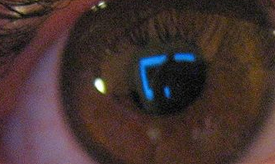
Various studies have looked at the relationship between creativity and intelligence. Fluid intelligence is defined as the ability to problem solve in novel situations, and creativity involves novelty, so there is a link, and it’s worth asking what that link is in more detail.
Divergent Thinking and Fluid Intelligence (Gf)
An overview of the literature suggests that certain components of the creative process are indeed related to fluid intelligence levels – but not all components. One component that is related is what is called divergent thinking. This is the ability to generate a lot of diverse ideas – for instance dreaming up unconventional uses for everyday objects such as bricks and newspapers. A recent study has found a correlation of 0.54.
How Can We Improve Divergent Thinking?
Elizabeth Shobe and colleagues have provided the first evidence that divergent thinking creativity is boosted by doing something that increases the communication between the two hemispheres of your brain – called ‘hemispheric cross-talk’.
The logic of their experiment is simple: It is known that ‘split brain’ patients who have had the nerve fibres joining the two hemispheres surgically cut to prevent epilepsy seizures spreading across the whole brain, have deficits on creative tasks.
Here is a case where hemispheric cross talk is impaired resulting in less creativity. Shobe and her colleagues reasoned that if hemispheric cross-talk is enhanced, this may improve creativity.
What she showed in her experiment is that when people were given a creativity task requiring divergent thinking, they improved their performance simply by spending 30 seconds shifting their eyes horizontally back and forth after an initial try with the task. Shifting your eyes back and forth without moving your head increases the visual information flow between the two hemispheres.
However this effect of eye movement was only found with ‘strong handers’ – those who had one hand that is particularly dominant – not with ‘mixed handers’ who are relatively more ambidextrous.
The last twist is that ‘mixed handers’ tended to be more creative in general, suggesting there was more natural communication between their hemispheres in the first place compared to ‘strong handers’. Doing the side to side eye movements enabled the ‘strong handers’ to reach the creativity levels of the ‘mixed handers’.
How Long Did the Effects of Eye Movements Last?
Only a few minutes – 3 to 9 minutes! So to make use of this intervention in your day to day problem solving, it’s important to move your eyes again after a few minutes to keep the effect up if your creative juices have run dry!
“Our findings may not apply to more unique populations who are characterised as ‘highly creative’,” the researchers said, “nor can we conclude … that the thirty seconds bilateral eye movement task will turn an average individual into an artist, poet, scientist, philosopher, actor or sculptor. However, we certainly do propose that the … eye movement task will result in a temporary increase in strong-hander’s ability to think of creative uses for various …objects.”
Horizontal Eye Movements and Memory: Good for Strong Right Handers
These results can be seen in the light of recent research that shows that side to side eye movements aid memory performance for strongly-right handed people. However, the same eye movements impair the performance of left-handers and mixed-handers!
Reference
Shobe ER, Ross NM, & Fleck JI (2009). Influence of handedness and bilateral eye movements on creativity.Brain and cognition, 71 (3), 204-14 PMID: 19800726


